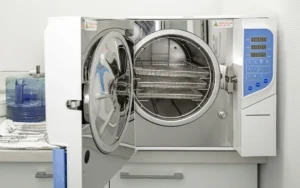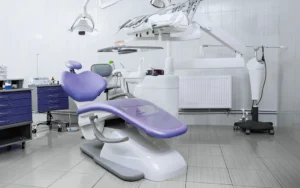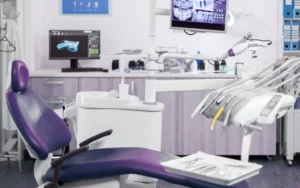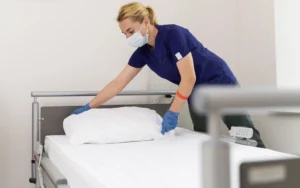Hospital furniture plays a huge role in keeping patients comfortable and healthcare facilities running smoothly. But without proper care, these beds, chairs, and tables can wear out quickly, making hospitals spend more money on replacements. Worse, dirty or poorly maintained furniture can spread infections.
So, how do clinics, hospitals, and healthcare providers keep their furniture in top condition? This guide covers easy and effective ways to maintain and clean hospital furniture, ensuring hygiene, durability, and cost savings.
Table of Contents
Why is it Important to Maintain and Clean Hospital Furniture?
Hospital furniture is in constant use, making regular maintenance and cleaning a must. Without it:
- Bacteria and viruses can spread from patient to patient.
- Furniture wears out faster, leading to costly replacements.
- Patients and staff feel uncomfortable using dirty, damaged furniture.
According to the CDC, about 1 in 31 hospital patients contracts at least one healthcare-associated infection (HAI) on any given day. By following best practices for hospital furniture care, hospitals can prolong the life of medical furniture while maintaining a safe and comfortable environment for patients and staff.
How Often Should Hospital Furniture Be Cleaned?
Different types of hospital furniture require different cleaning schedules:
| Furniture Type | Cleaning Frequency |
|---|---|
| Chairs & waiting room seats | Daily wipe-down, deep clean weekly |
| Examination tables | sanitize daily |
| Wheelchairs & stretchers | Disinfect after every use, deep clean weekly |
| Bedside tables & trolleys | Daily cleaning, deep cleaning monthly |
How to Properly Maintain and Clean Hospital Furniture
Use the Right Cleaning Products
Using the wrong cleaning products can damage furniture or fail to remove harmful bacteria.
- Hospital-grade disinfectants (e.g., hydrogen peroxide-based cleaners) are strong enough to kill bacteria but safe for surfaces.
- Microfiber cloths and mops trap dirt, dust, and microbes better than regular cloths.
- Steam cleaners for deep cleaning without using chemicals.
- Lubricants for moving parts like wheels, hinges, and adjustable levers.
- Protective covers and pads to prevent damage and reduce contamination risks.
Experts from the Association for the Health Care Environment (AHE) emphasize that “Materials and finishes must be compatible with hospital-grade detergents, cleaners and disinfectants for best results.”
Disinfecting Hospital Beds and Chairs the Right Way
Hospital beds and chairs are used hundreds of times a day, making them the biggest source of bacteria. Proper cleaning and disinfection steps include:
Step 1: Remove visible dirt using a damp microfiber cloth.
Step 2: Focus on high-touch areas (bed rails, armrests, remote controls, and wheels).
Step 3: Apply EPA-approved disinfectant and let it sit for the recommended time.
Step 4: Allow surfaces to air dry before next use.
Proper disinfection significantly reduces the risk of hospital-acquired infections (HAIs) in patients.
Best Practices for Hospital Furniture Care Based on Material Type
Different materials need different cleaning methods. Here is what works best:
A. Metal Furniture (Hospital Beds, Stretchers, IV Stands)
- Wipe with a damp cloth and mild soap to remove dirt.
- Apply anti-rust spray to prevent corrosion.
- Avoid excess water, which can cause rust.
B. Wooden Furniture (Cabinets, Tables, Chairs)
- Use a dry cloth for dusting daily.
- Apply wood-friendly disinfectants to kill germs.
- Keep away from excess moisture to prevent warping.
C. Upholstered & Fabric Furniture (Waiting Room Sofas, Recliners)
- Vacuum weekly to remove dust and debris.
- Use fabric-safe disinfectants for sanitation.
- Steam clean monthly to remove deep stains.
D. Plastic & Composite Furniture (Trolleys, Examination Tables, Stools)
- Wipe with alcohol-free disinfectants to prevent cracking.
- Avoid strong chemicals that may degrade plastic over time.
- Store in shaded areas to prevent discoloration.
Preventive Maintenance: How to Make Hospital Furniture Last Longer
Hospitals that follow a regular maintenance plan save up to 60% on furniture replacement costs.
Simple maintenance steps can prolong the life of medical furniture and save costs.
- Check for damage regularly – Look for loose screws, worn-out upholstery, or rust spots.
- Lubricate moving parts – Use manufacturer-approved lubricants on wheels, levers, and joints.
- Train staff on proper use – Most damage happens due to improper use. Make sure everyone knows how to adjust beds, recliners, and tables safely.
- Use protective covers – Covers on mattresses, chairs, and examination tables reduce direct contact with dirt and spills.
Common Mistakes in Hospital Furniture Maintenance (And How to Avoid Them)
- Using Too Much Water – Excess moisture can lead to rust or mold buildup. Instead, use a damp cloth for wiping.
- Ignoring Small Repairs – A small tear in upholstery or a loose wheel can become a big problem if not fixed early.
- Skipping Deep Cleaning – Daily wiping is not enough. Make sure to schedule weekly deep cleans to remove hidden germs.
- Not Following Manufacturer Guidelines – Every hospital furniture piece comes with care instructions. Using the wrong cleaner can void warranties.
The Role of Technology in Hospital Furniture Maintenance
Hospitals today are using technology to improve furniture maintenance:
- IoT Sensors: Detect early signs of damage and send maintenance alerts.
- AI-Based Cleaning Schedules: Automate reminders for deep cleaning and repairs.
- UV Light Sanitization: Uses UV rays to kill bacteria on furniture surfaces.
Simple Steps to Keep Hospital Furniture Clean and Durable
Let us go over the main steps we covered here so you can easily follow and use them.
- Clean & disinfect daily using hospital-grade cleaners.
- Use the right cleaning methods for each material (wood, metal, plastic, fabric).
- Check for damage regularly and fix minor issues before they get worse.
- Invest in smart cleaning technology to improve efficiency.
- Train hospital staff on proper furniture handling.
- Follow manufacturer guidelines for cleaning and maintenance.
- Use protective covers and pads on high-use furniture to reduce wear and tear.
- Lubricate moving parts (wheels, hinges, levers) to prevent squeaking and breakdowns.
- Ensure proper ventilation in rooms to prevent mold and moisture damage on wooden furniture.
- Rotate and reposition furniture periodically to prevent uneven wear, especially in waiting areas.
- Deep clean upholstery and fabric furniture using steam cleaning to remove embedded dirt.
- Set a regular maintenance schedule and keep spare parts ready for quick fixes.
- Work with certified professionals for major repairs and maintain records of all cleaning and maintenance.
At Winray, we know that well-maintained hospital furniture improves patient care and facility operations. Our products are designed for easy cleaning and durability, helping hospitals maintain high hygiene standards with minimal effort.
Want high-quality, durable hospital furniture that’s easy to clean and maintain? Check out our product range here!











